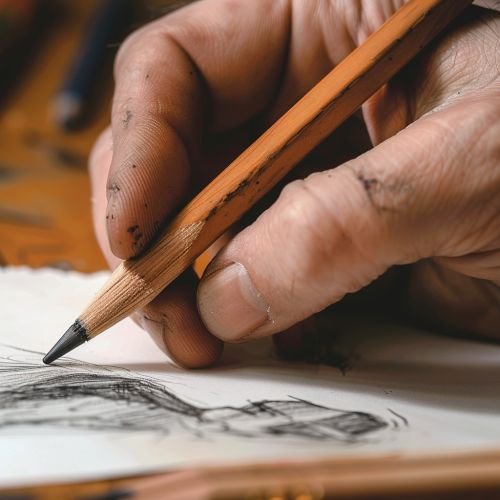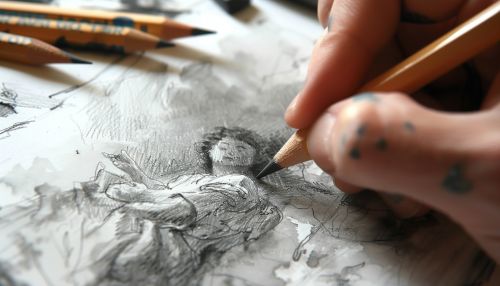Shading
Introduction
Shading is a technique used in visual arts to depict the depth and volume of objects by varying the color and intensity of the medium. It is a fundamental aspect of creating a realistic representation of three-dimensional objects on a two-dimensional surface, such as paper or canvas. Shading techniques can be applied in various artistic mediums, including drawing, painting, and digital art.
Principles of Shading
Shading is based on the principles of light and shadow. When light hits an object, it creates areas of light and dark, which are referred to as highlights and shadows. The way these areas are depicted in an artwork determines the perceived shape and depth of the object.
Light and Shadow
Understanding the behavior of light is crucial for effective shading. Light behaves predictably when it interacts with objects, creating a series of tonal changes that artists can observe and replicate. These tonal changes include the highlight, light, shadow, reflected light, and cast shadow.
The highlight is the brightest area on the object, where the light source directly hits. The light area, also known as the mid-tone, is the part of the object that is lit indirectly. The shadow is the area that light does not reach, and the reflected light is the light that bounces off nearby surfaces onto the object. The cast shadow is the dark area that the object projects onto other surfaces.
Value and Contrast
Value refers to the relative lightness or darkness of a color. In shading, artists use a range of values to represent the different tonal areas of an object. The contrast between these values is what creates the illusion of depth and volume.
Shading Techniques
There are several techniques that artists use to apply shading to their artworks. These techniques vary depending on the medium and the desired effect.
Hatching and Cross-Hatching
Hatching is a shading technique that involves drawing closely spaced parallel lines. The density and spacing of the lines determine the perceived value. Cross-hatching is a variation of this technique, where additional sets of lines are drawn at an angle to the first set, creating a mesh-like pattern.
Stippling
Stippling is a technique that uses small dots to create value. The density and distribution of the dots determine the perceived lightness or darkness of an area. This technique is often used in pen and ink drawings.
Blending
Blending is a technique that involves smoothing out the transitions between different values to create a gradient effect. This technique is commonly used in pencil and charcoal drawings, as well as in digital art.
Scumbling and Glazing
In painting, artists use techniques such as scumbling and glazing to create shading. Scumbling involves applying a thin, opaque layer of paint over a dried layer to create a softer, diffused effect. Glazing, on the other hand, involves applying a thin, transparent layer of paint, allowing the underlying color to show through and influence the perceived color and value.
Shading in Different Mediums
Shading techniques can vary significantly depending on the medium. Each medium has its unique characteristics that can influence the shading process.
Pencil Shading
In pencil drawing, artists often use a range of pencils with different hardness levels to achieve a variety of values. Softer pencils produce darker values, while harder pencils produce lighter values. Techniques such as hatching, cross-hatching, and blending are commonly used in pencil shading.
Charcoal Shading
Charcoal is a versatile medium that is well-suited for expressive shading. It can produce a wide range of values, from deep blacks to light grays. Artists often use blending tools, such as a stump or a piece of cloth, to smooth out the charcoal and create gradients.
Digital Shading
In digital painting, artists use digital tools to apply shading. These tools can mimic traditional shading techniques, such as hatching and blending, or offer unique capabilities, such as layers and opacity control. Digital shading can also involve the use of gradients and custom brushes.
Conclusion
Shading is a fundamental technique in visual arts that allows artists to create a sense of depth and volume in their works. It involves understanding the principles of light and shadow, and applying a range of techniques to depict these tonal changes. While the specific methods can vary depending on the medium, the underlying principles remain the same.
See Also


